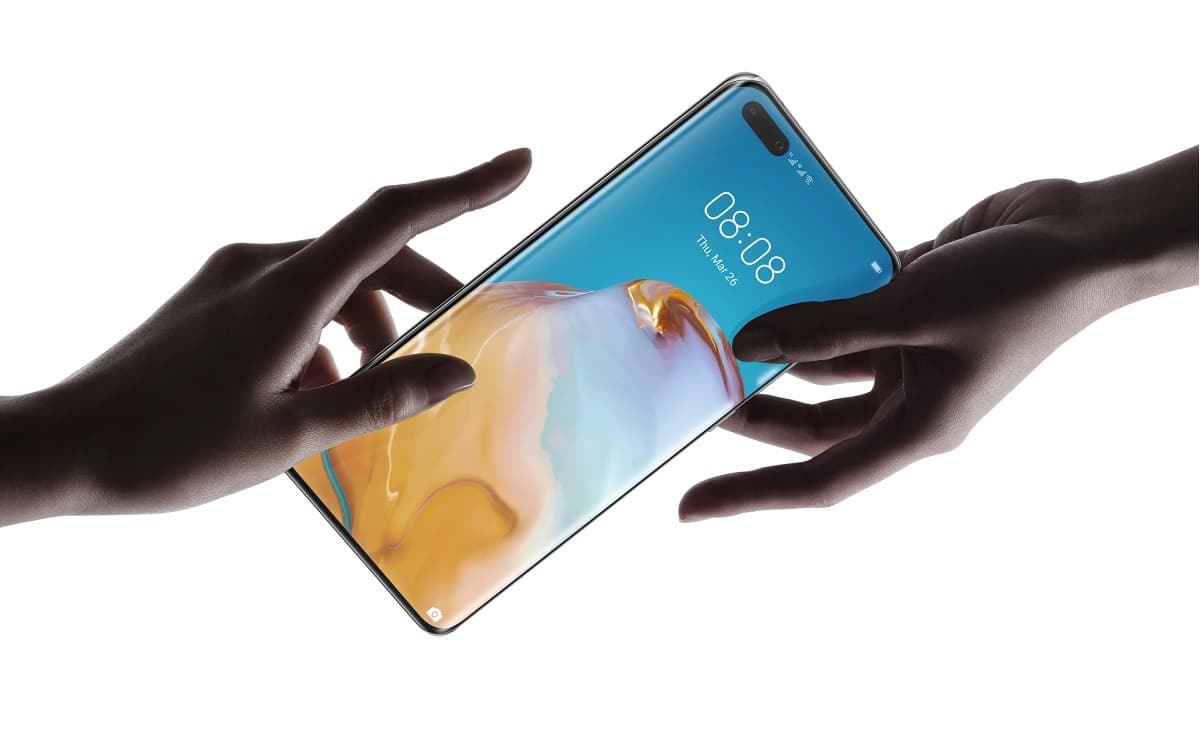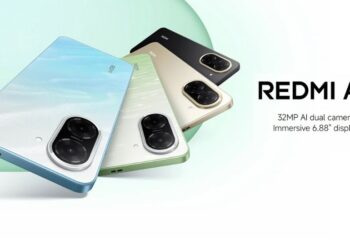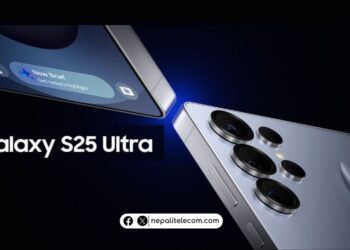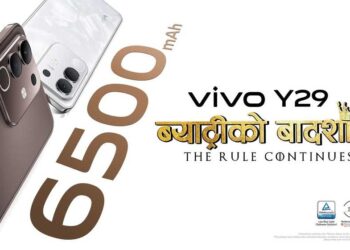Today, we all are struggling with a pandemic disease that is responsible for self-quarantine and lockdown. Due to this, many of us are doing our official work from home. Even in this difficult situation, Huawei has been able to launch its new smartphones, not one, but three: Huawei P40, P40 Pro and P40 Pro Plus, the successor to Huawei P30 launched last year.
At the same time, the details of the products have been revealed on March 26, 2020, from China. Although, the ‘Launch Event’ was conducted online as most of the world is suffering from the Covid-19, the common features of the P40 lineup are 50 MP Ultra Vision Leica Camera, Kirin 990 chipset and 8GB RAM.
Richard Yu, CEO of Huawei Consumer BG, “The HUAWEI P Series has always been about innovative aesthetics and making premium imaging hardware accessible, representing the very best of industrial design and technology. With an outstanding sensor, camera systems that we co-engineered with Leica, powerful chipset and HUAWEI XD Fusion Engine, the HUAWEI P40 Series exemplifies our focus and offers an all-day Super Definition experience to help consumers realize their creative vision.”
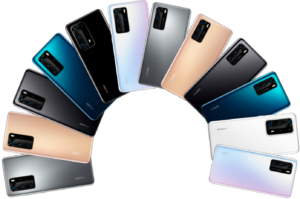
Overview
Display
Huawei P40 flaunts a 6.1-inch display which is relatively small with 148.9mm (5.86 in)*71.1mm (2.80 in)*8.5mm (0.33in) dimension and a screen refresh rate of just 60Hz. In addition, the phone devours OLED Capacitive touchscreen facilitating the user with 2340*1080 pixels resolution and 422 PPI density. Also, the screen-to-body ratio is 86.3% and the aspect ratio is 19:5:9.
On the other hand, Huawei P40 Pro and Huawei P40 Pro plus both have a 6.58-inch display with 1200*2640 resolution and 441 PPI density offering refresh rate of 90Hz. Also, these two phones have a more striking look than standard P40 with higher resolution. In the meantime, these two phones feature OLED Capacitive Touch screen which is the same as the P40 model.
Huawei terms the screen as quad-curve overflow display with better responses and fluid look alike. The curved edges and extremely narrow bezels make the phone look amazingly beautiful.
Design
In particular, the three phones have a cut out on the top-left corner for the selfie camera. Consequently, they have also substituted the notch display. On the one hand, P40 and P40 Pro have glass-back while on the other P40 Pro+ has a ceramic back which differentiates it from the other two models. While all of them are dust-resistant, only P40 Pro and P40 Pro+ are water-resistant.
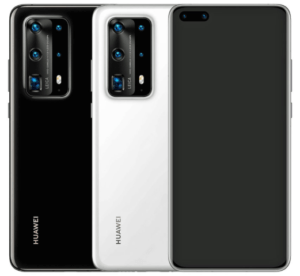
While coming to colors, then Huawei P40 and P40 Pro have color variants of Silver Frost, Deep Sea Blue, Bluish Gold, Ice White, and Black whereas P40 Pro+ has just two color variants i.e. White Ceramic and Black Ceramic.
Chipset and RAM/Storage
Above all, Huawei P40, P40 Pro and P40 Pro+ are powered with HiSilicon Kirin 990 5G (7nm+) of the chipset. Besides, they run with Android 10.0 (ASOP+HMS) and EMUI 10.1 software cum operating system. In fact, these phones are motorized with Octa-core (2×2.86 GHz Cortex-A76 & 2×2.36 GHz Cortex-A76 & 4×1.95 GHz Cortex-A55) processor.
In the same way, Mali-G76 MP16 is accountable to handle the graphics of all these phones. While only the P40 Pro+ model has 4 layers super cool system allocated to cool the phone even when taxing the chipset.
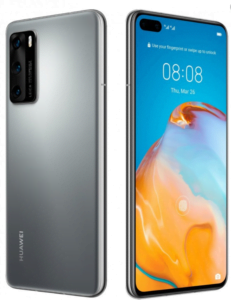
While all these models have 8 GB RAM, they differ in internal storage capacity. We can also get 6GB RAM in the Huawei P40 model. In particular, the internal storage of Huawei P40 is 128 GB (ROM) which is expandable up to 256 GB, P40 Pro is 128 GB, 256 GB, & 512 GB and P40 Pro+ is 256 GB & 512 GB, however, all three models are featured with UFS 3.0. Besides, these phone customs a Nano memory card slot.
Furthermore, Huawei P40 has a non-removable Li-PO 3800 mAh battery backup which comes with 22.5 W Huawei SuperCharge whereas P40 Pro and P40 Pro+ have non-removable Li-PO 4200 mAh battery backup with 40W fast charge and also enables wireless charging.
Camera
Indeed, Huawei P40 has a triple rear camera with 50 MP (f/1.9) omnidirectional PDAF, optical image stabilization(OIS) primary sensor, 8MP (f/2.4) telephoto lens, and last but not least 16 MP (f/2.2) ultra-wide lens. Subsequently, P40 Pro has a quad rear camera with 50MP primary sensor with OIS, 12MP telephoto sensor, 40 MP ultra-wide cine lens, not forgetting the ToF sensor.
The camera sensor in the P40 series phone is quite large of size 1/1.28-inch which enhances the low light photography capability. The periscope design with the superzoom array provides the 10x optical zoom and 100X digital zoom. Similarly, the Full Pixel Octa PD AutoFocus enables the high-speed autofocus at any lighting conditions.
On the other hand, P40 Pro plus has a Penta camera of 50MP (f/1.9) main sensor with (OIS) for great pictures in low light conditions. It also has a 40MP (f/1.8) ultra-wide sensor, an 8MP (f/4.4) periscope lens with OIS, 10x optical zoom and an 8MP (f/2.4) telephoto lens with OIS with 3x optical zoom.
Moreover, all of them also serve the user for recording video of 2160 p@30/60 fps, 1080p@30/60fps, and 720p@960fps with gyro- EIS. Consequently, these phones have a 32 MP (f/2.0) front camera capable of clicking HDR photos and videos. They also feature Lecia optics, LED flash, panorama, and HDR. However, P40 Pro and P40 Pro+ have a ToF sensor which is not available in standard P40.
Special Features
Apart from the in-display fingerprint sensor and the AI photographic capability, P40 series phone support 5G network and WiFi 6 Plus. Higher battery, fast charging, supercooling system are some of the other features in P40 Pro Plus.
The front camera of P40 Pro and P40 Pro Plus has 32 MP lens along with an IR depth camera for better bokeh shots and autofocus.
ALSO READ: Huawei Appgallery to download apps in place of Google play store.
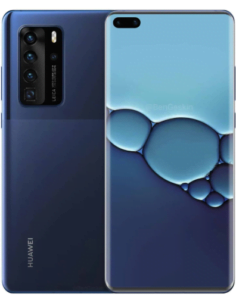
Specifications of Huawei P40, Huawei P40 Pro and Huawei P40 Pro+
Features |
Huawei P40 |
Huawei P40 Pro |
Huawei P40 Pro+ |
| Display | 6.1-inch OLED capacitive touchscreen | 6.58-inch OLED capacitive touchscreen | 6.58-inch OLED capacitive touchscreen |
| Resolution | 2340*1080 pixels with 422 PPI density | 1200*2640 resolution with 441 PPI density | 1200*2640 resolution with 441 PPI density |
| Chipset | HiSilicon Kirin 990 5G (7nm+) | HiSilicon Kirin 990 5G (7nm+) | HiSilicon Kirin 990 5G (7nm+) |
| CPU | Octa-core (2×2.86 GHz Cortex-A76 & 2×2.36 GHz Cortex-A76 & 4×1.95 GHz Cortex-A55) processor | Octa-core (2×2.86 GHz Cortex-A76 & 2×2.36 GHz Cortex-A76 & 4×1.95 GHz Cortex-A55) processor | Octa-core (2×2.86 GHz Cortex-A76 & 2×2.36 GHz Cortex-A76 & 4×1.95 GHz Cortex-A55) processor |
| GPU | Mali-G76 MP16 | Mali-G76 MP16 | Mali-G76 MP16 |
| Software | Android 10.0 (ASOP+HMS) and EMUI 10.1 | Android 10.0 (ASOP+HMS) and EMUI 10.1 | Android 10.0 (ASOP+HMS) and EMUI 10.1 |
| RAM | 8 GB | 8 GB | 8 GB |
| Storage | 128GB ( expandable up to 256 GB) with UFS 3.0 | 128 GB, 256 GB, & 512 GB with UFS 3.0 | 256 GB & 512 GB with UFS 3.0 |
| Rear Camera | Triple: 50 MP(f/1.9) OIS primary sensor, 8MP (f/2.4) telephoto lens, and 16 MP(f/2.2) ultra-wide lens | Quad: 50MP primary sensor with OIS, 12MP telephoto sensor and 40 MP ultra-wide cine lens with ToF sensor | Penta: 50MP (f/1.9) main sensor with (OIS), 40MP (f/1.8) ultra-wide sensor, an 8MP (f/4.4) periscope lens and an 8MP (f/2.4) telephoto lens with OIS including ToF sensor |
| Front Camera | 32 MP (f/2.0) lens | 32 MP (f/2.0) lens With IR depth camera | 32 MP (f/2.0) lens With IR depth camera |
| Fingerprint Sensor | Fingerprint ( under the display, optical) | Fingerprint ( under the display, optical) | Fingerprint ( under the display, optical) |
| Connectivity | Wi-Fi 802.11 a/b/g/n/ac/ax, Bluetooth 5.1, GPS with dual-band A-GPS, GLONASS, BDS, GALILEO, QZSS, NavICand also 3.1 USB | Wi-Fi 802.11 a/b/g/n/ac/ax, Bluetooth 5.1, GPS with dual-band A-GPS, GLONASS, BDS, GALILEO, QZSS, NavIC and also 3.1 USB | Wi-Fi 802.11 a/b/g/n/ac/ax, Bluetooth 5.1, GPS with dual-band A-GPS, GLONASS, BDS, GALILEO, QZSS, NavIC and also 3.1 USB |
| Battery | 3800 mAh battery along with 22.5 W fast charge | 4200 mAh battery along with 40W fast charge | 4200 mAh battery along with 40W fast charge |
| Sensor | Infrared face recognition, fingerprint (under display, optical), accelerometer, gyro, proximity, compass, and color spectrum | Infrared face recognition, fingerprint (under display, optical), accelerometer, gyro, proximity, compass, and color spectrum | Infrared face recognition, fingerprint (under display, optical), accelerometer, gyro, proximity, compass, and color spectrum |
| Color | Silver Frost, Deep Sea Blue, Bluish Gold, Ice White, and Black | Silver Frost, Deep Sea Blue, Bluish Gold, Ice White, and Black | White Ceramic and Black Ceramic |
| SIM | Dual Nano SIM | Dual Nano SIM | Dual Nano SIM |
Price and Availability
As mentioned earlier, these phones were launched on 26th March 2020 in China, but the availability could be affected due to COVID-19. So, the expected price of Huawei P40 series phones in Nepal is as follows. Eventually, we expect the P40 Pro to have the same price as that of the Mate 30 Pro.
| Model | Global Price |
Price in Nepal |
| Huawei P40 (8GB +128GB) |
799 Euros |
Rs. 1,10,000 |
| Huawei P40 Pro (8GB +256GB) |
999 Euros |
Rs. 1,30,000 |
| Huawei P40 Pro Plus (8GB +512GB) |
1399 Euros |
Rs. 1,80,000 |
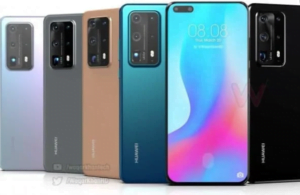
Certainly, Samsung Galaxy S20 ultra has Dynamic AMOLED 2X capacitive touch screen which is known to be better than Huawei P40 series AMOLED capacitive touchscreen. Similarly, Samsung S20 ultra has a higher battery capacity of 5000 mAh than Huawei P40 Pro plus’s 4200 mAh battery. Not only has this but the Samsung S20 ultra also has a feature to accept the command in natural language which Huawei P40 series lacks.
Similarly, Xiaomi Mi 10 Pro ( compared to the Pro plus) has a snapdragon chipset and the display size is comparatively bigger than Huawei series models. And, Xiaomi Mi 10 Pro has a 4500 mAh battery which is of greater capacity than that of P40 Pro and P40 Pr plus.
Both S20 Ultra and Mi 10 Pro have a 108MP Samsung sensor aka ISOCELL Bright HMX which P40 series lack. But we are yet to see the DXoMark score for P40 series phone if they are found better than them.
Similarly, you will need to know that the P40 series phones have open-source Android OS with Huawei Mobile service (HMS) over it, due to the restrictions by the US.
We recommend you to read all the latest Huawei phones in Nepal.
Please let us know in the comments how you felt about the Huawei P40 series and its price.


